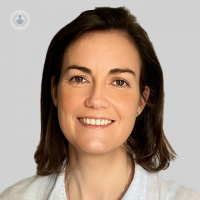When to see a paediatric ENT specialist for children's facial surgery
Written by:The functional, physical and emotional aspects of early years' facial plastic surgery mean serious consideration and preparation for both children and their parents. Miss Louisa Ferguson, paediatric otolaryngology and cleft lip and palate surgeon, provides a comprehensive introduction for caregivers wanting to know all about children's facial surgery.

Why might a child need facial plastic surgery?
Children tend to require facial plastic surgery in relation to congenital malformations or trauma. In most cases, surgery is offered to improve both aesthetic and functional issues that children may have. Self-confidence and self-esteem can also be affected by these issues and are a major factor when deciding on a management plan.
What are some of the most common procedures that may be performed as facial plastic surgery?
Cleft lip and palate are the most common congenital craniofacial malformations, about 1,000 new babies per year are born with this condition in the UK. The cleft can involve the lip, nose, gum line and palate. Children with a cleft of the lip require initial lip and nose repair in early infancy, and may require further revision procedures on either the lip or nose to help improve the scar or symmetry. Children with cleft lip and palate should be treated by a multidisciplinary team that can deal with all aspects of their care, and by a doctor who is specialist in this condition.
External nasal surgery is very uncommon in young children. Nasal dermoids can present as lumps, dimples or pits along the midline of the nose. During development in the womb, cells that should be external, such as skin cells, get trapped inside. This can cause cystic swellings or a fistula tract, resulting in potential recurrent infection.
Occasionally these cysts and tracts can extend up to the skull base. Diagnosis is often made on history and detailed clinical examination. In the case of nasal dermoids, three-dimensional radiological imaging is often recommended to ensure the extent of the problem is identified before surgery. Surgical management to remove the entirety of the lesion is the treatment of choice. The best approach for surgery will be determined by the location and extent of the lesion on the nose.
Often, an external rhinoplasty approach is undertaken which involves a small scar on the columella at the base of the nose, and then lifting the skin of the nose to follow the tract. Sometimes a midline scar on the nose is required, if the skin is involved. Dermoids can occur in other areas of the face, such as the edge of the eyebrow. These dermoids tend to just be under the skin so are easier to remove. It´s also common for pits and fistula to occur just in front of the ear, known as preauricular sinuses. They can be removed if they are troublesome, leaving a barely noticeable scar in the ear crease.
Trauma to the nose in young children rarely causes an external deformity, thankfully. This is mainly because the forehead is more prominent than the nasal bones, the relationship of which changes as you grow. Trauma can lead to deviation of the septum on the inside of the nose, which can result in restriction of nasal breathing. Trauma can also potentially lead to bruising of the septum and formation of a haematoma, which, although rare, is very important to get treated urgently. If children or teenagers do sustain trauma which results in an external deformity, then treatment within seven to 14 days is recommended as this is the window in which bones can be reset under anaesthetic if required. Often formal surgery on the septum is reserved until the patients are at least 14 to try and avoid disruption of growth. Other forms of nasal surgery to help with blockages, such as reduction of the size of the turbinates or adenoids, can be performed at a younger age.
Otoplasty, or pinnaplasty as it is also known, is a procedure to pin back protruding ears. This is often performed between the ages of six to 12 years, as this is often when children become more self-aware. There are a number of different techniques for this operation, depending on the specific change you are trying to make.
Should we visit a paediatric plastic surgeon or a paediatric ENT specialist for my child's facial surgery?
The most important thing when choosing a surgeon is whether they have expertise in that particular area. Many of these issues are relatively rare, so you want to choose a surgeon whose clinical practice focuses on paediatric facial surgery.
How does it work if a child has more than one condition (such as a cleft palate combined with speech and breathing problems?) Do you work with a team of specialists?
Yes, I work within a team of specialists. I do one clinic a month with a specialist speech and language therapist for any children with speech problems, particularly if they are related to soft palate issues. Problems with the soft palate can include excess air coming down the nose, difficulty in certain consonant sound production and nasal regurgitation of fluids. As I am a specialist in both cleft lip and palate and paediatric ENT surgery, I also cover associated issues with breathing or hearing, as required. I have audiology support at most of the clinics and I also have good links with paediatric psychology if required.
What can parents and their child expect during their whole experience in your clinic?
Surgery to the face can be a daunting prospect for both parent and child. I spend a great deal of time in my clinic explaining the diagnosis and potential options for treatment. If appropriate, I feel it is important to include children and young adults in this decision making as much as possible. During the outpatient appointment a thorough history, along with clinical examination of the area, is performed. Clinical photographs will be taken if indicated. If possible, I show pictures of other similar procedures and set expectations of what can be achieved.
Depending on the treatment proposed, the follow-up and recovery can vary. The majority of these types of procedures can be performed as day case surgery. I always check in at 48 hours with all patients I have operated on, and follow up with a wound check between one and two weeks. My door is always open via email and phone if there are questions between appointments. Guidance and support throughout the treatment process is of paramount importance to me, almost as important as the procedure itself. I am there with the families every step of the way.
Miss Louisa Ferguson's specialised training, expert knowledge and care is available for you. Find out more about how she can assist, via her Top Doctors profile here.


